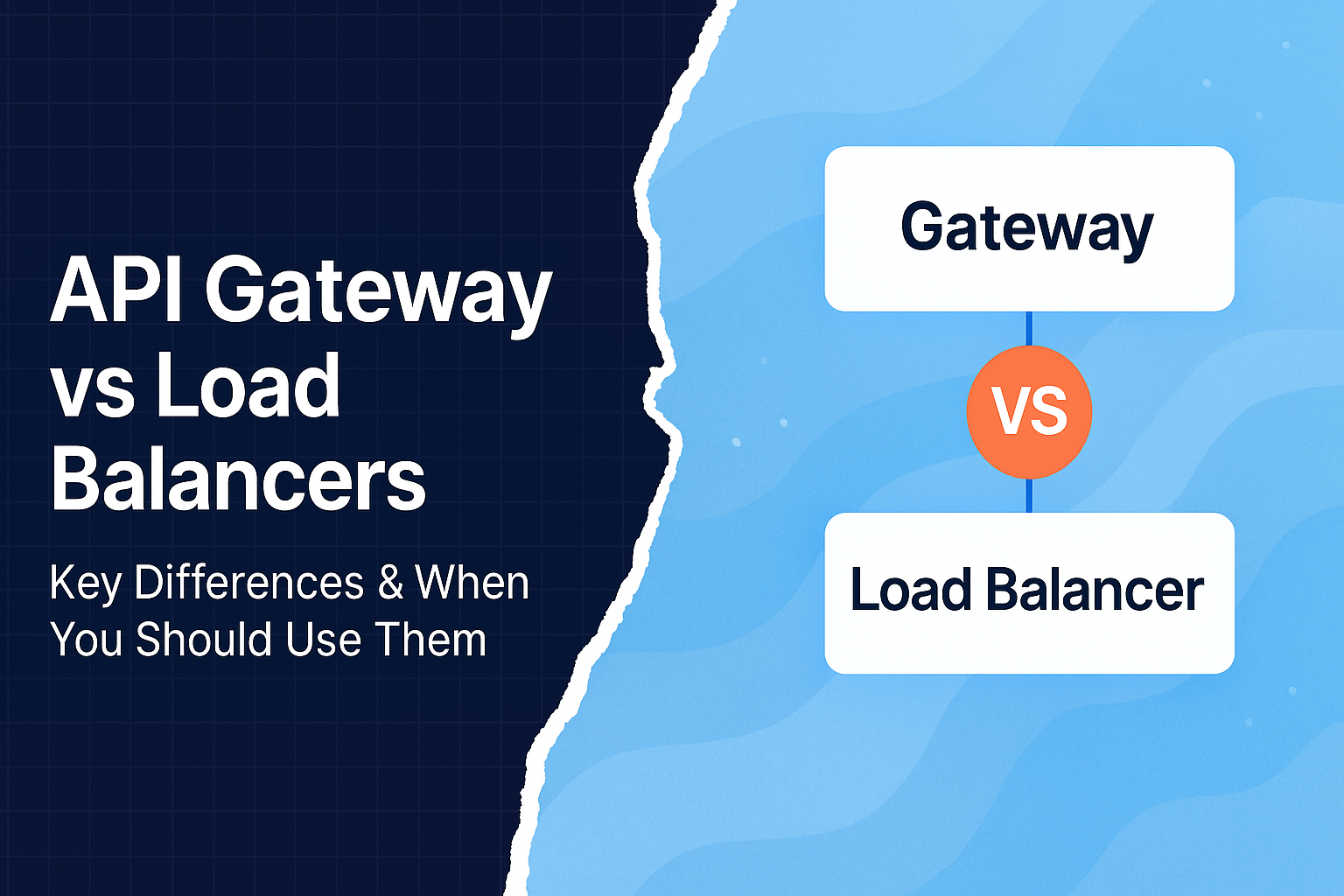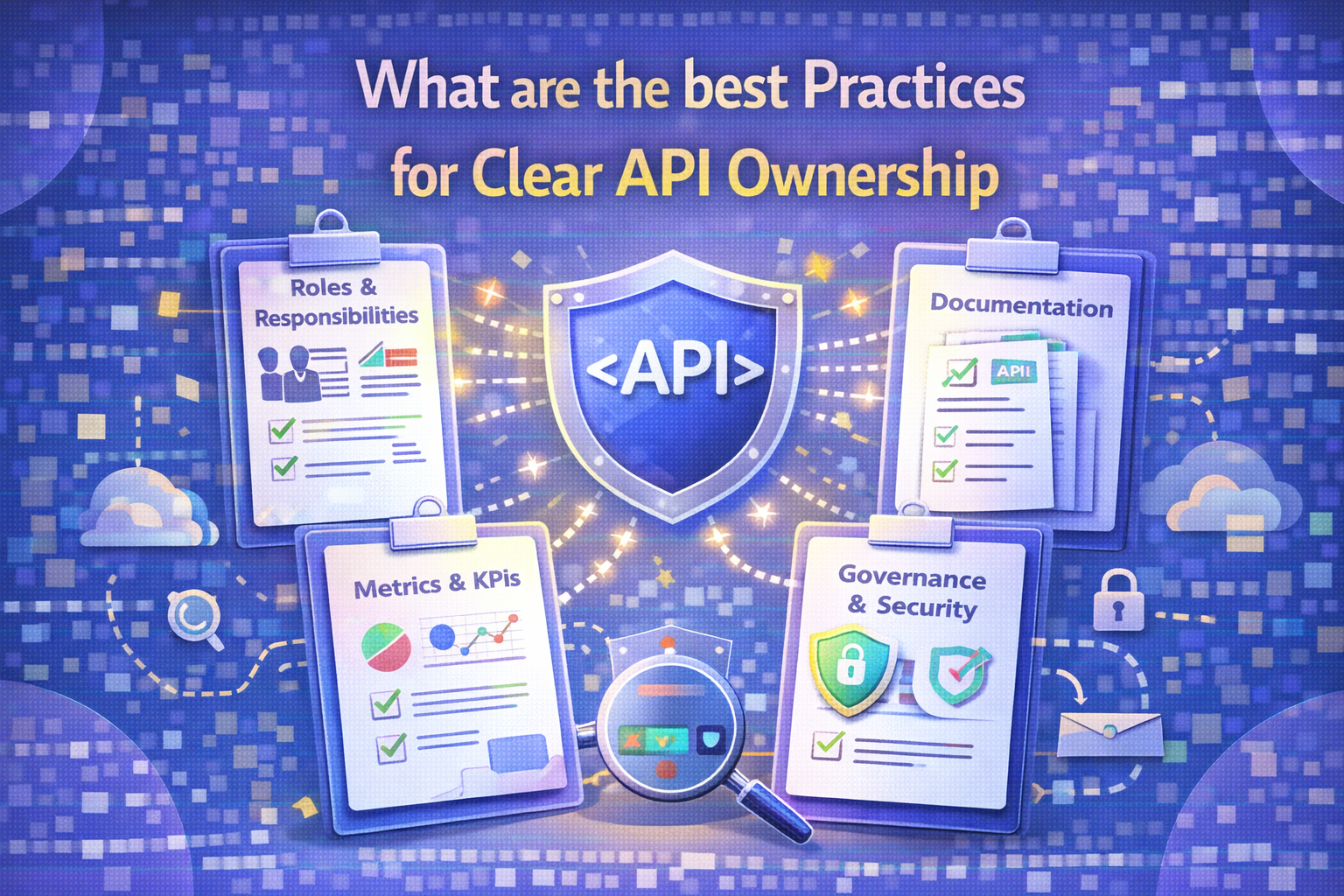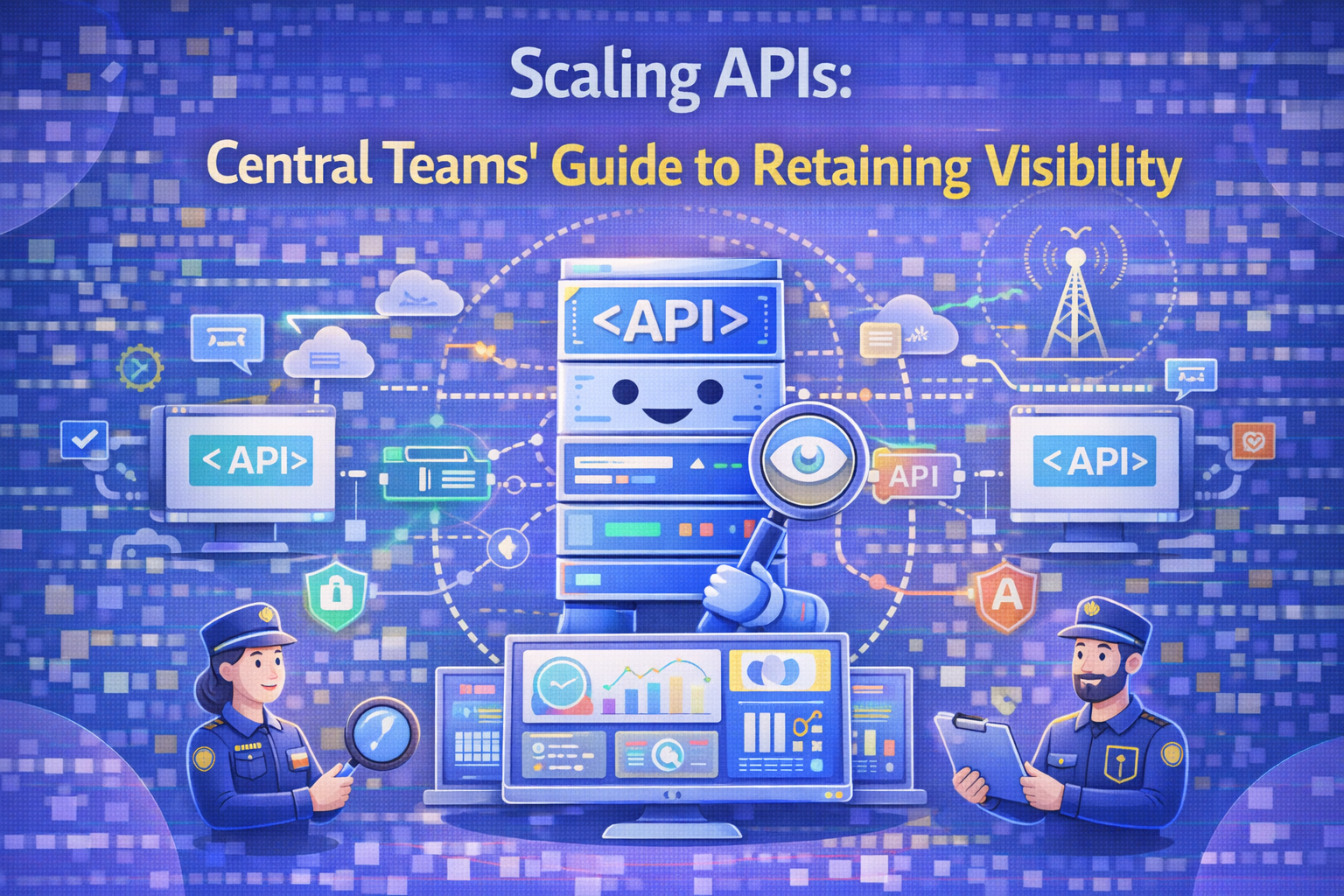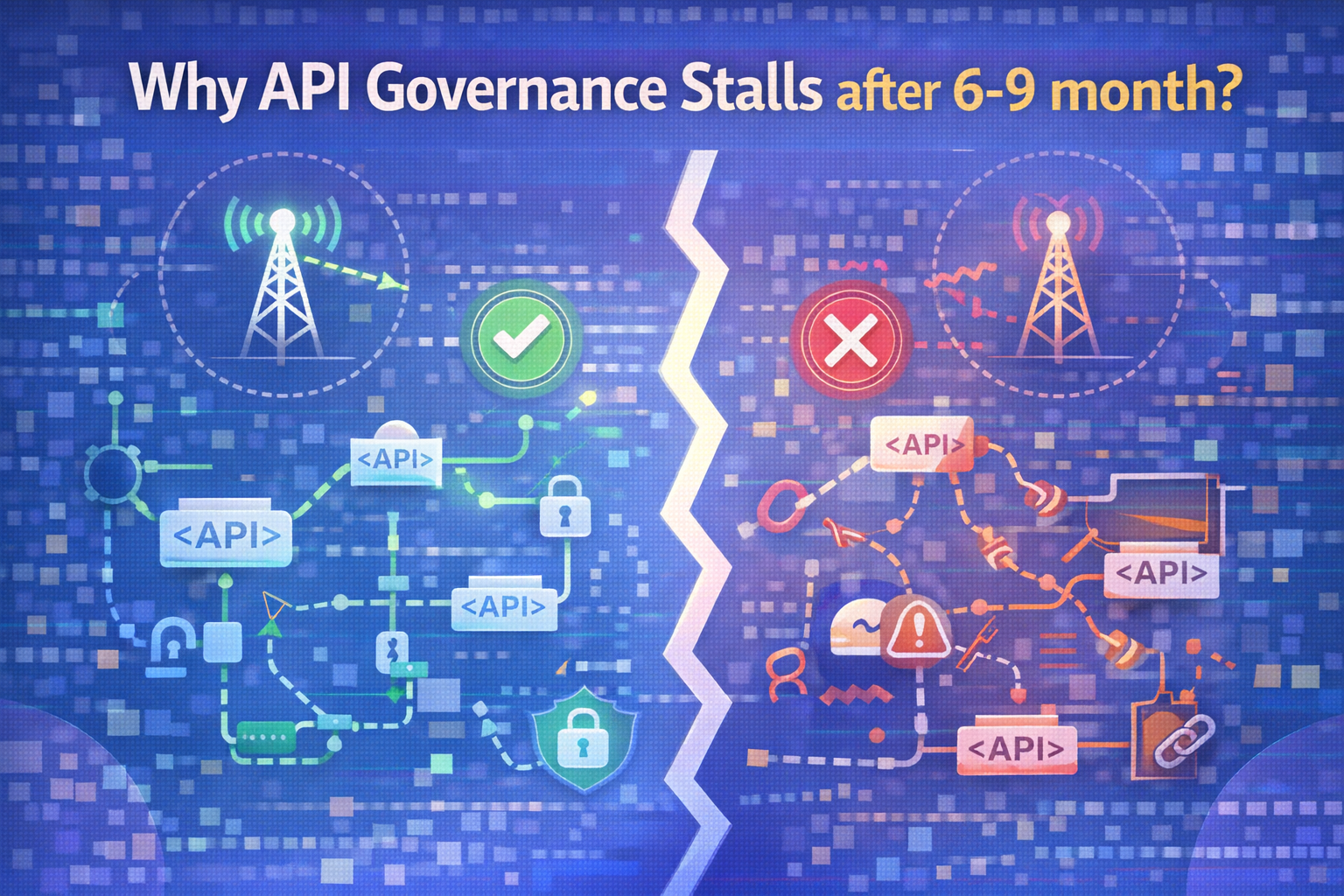API Gateway
API Gateway vs Load Balancers: Key Differences And When You Should Use Them
Updated on:

If I got a nickel every time seasoned architects debate API gateways versus load balancers, I'd be a millionaire. It's like arguing whether you need a Swiss Army knife or a hammer. Both sit between users and backends. Traffic flows through, requests get directed, performance improves. They sound practically identical, but they're not.
An API gateway is your smart doorman. It checks IDs, enforces rules, translates requests, and knows who belongs where. A load balancer is your rush-hour traffic cop. It keeps cars moving, prevents jams, and reroutes when needed. No interest in who you are.
The confusion happens because both manage traffic. But what they do couldn't be more different. Let's dive into how these tools actually work and why smart teams often run them together.
What is an API gateway?
An API gateway is your application’s front door when it comes to managing, routing, and securing all the API requests hitting your services. Think of it as a smart doorman. When clients try to access different parts of your system, the gateway steps in. It then checks what’s needed, and makes sure each request lands exactly where it belongs.
Core functions of an API gateway
- Routing Requests: The API gateway sends incoming API calls to the correct microservice or backend system.
- Authentication & Authorization: It verifies the identity of the requester and checks permissions before letting anyone in.
- Rate Limiting: The gateway prevents abuse by controlling how often clients can make requests.
- Request Transformation: It can modify request and response formats, so that the systems understand each other.
- Monitoring & Analytics: It gathers usage data and provides insights for teams to optimize APIs.
Key benefits
- Centralized Control: Instead of configuring each service separately, you manage policies and traffic in one place.
- Improved Security Posture: A gateway adds a protective layer that shields internal services from direct exposure.
- Better Developer Experience: Teams can evolve services behind the gateway without breaking client integrations.
- Scalability and Flexibility: You can optimize and scale different parts of the backend independently, without affecting clients.
An API gateway gives you a single, controlled, and secure front line for your APIs. This makes your entire system easier to manage and evolve over time.
What is a load balancer?
A load balancer is the traffic cop of your server environment. Its main job is to distribute incoming network or application traffic evenly across multiple servers or resources. This keeps your system running smoothly and prevents any single server from getting overwhelmed. So, servers are able to maintain high availability.
Core functions
- Traffic Distribution: It spreads client requests across servers to balance the load and avoid bottlenecks.
- Health Monitoring: The load balancer regularly checks the status of servers and directs traffic only to healthy, responsive ones.
- Fault Tolerance: If one server goes down, it automatically redirects traffic to others, minimizing downtime.
- Session Persistence: It can keep users connected to the same server during a session if required, which is useful for states and transactions.
- SSL Termination: The load balancer can handle SSL/TLS encryption, offloading that burden from backend servers.
Key benefits
- Enhanced Reliability: By distributing traffic and managing server health, it boosts your system’s uptime.
- Optimized Resource Use: It helps you get the most out of your hardware by preventing some servers from being idle while others are overloaded.
- Scalability: You can add or remove servers behind the load balancer without disrupting user experience.
Improved performance: Efficient traffic management reduces latency and speeds up response times.
In short, load balancers are the heroes that keep your infrastructure stable and efficient. This is especially important when handling large volumes of requests or sudden spikes in traffic.
API gateway vs load balancer: key differences
Understanding how API gateways and load balancers differ is essential for designing modern, efficient application architectures. Here’s a side-by-side look at their key distinctions:
When to use an API gateway?
API gateways shine when you need more than just basic traffic distribution. They’re built for situations where API calls require rules, transformations, and monitoring.
Typical use case scenarios include
1. You’re running a microservices architecture and want clients to interact through a single entry point.
2. You need centralized authentication and access control for all API endpoints.
3. Your APIs use multiple versions, and you want version management without exposing changes directly to clients.
4. You have rate-limiting, throttling, or complex request validation requirements.
5. You need to transform API requests and responses so legacy and modern systems can talk smoothly.
Common misconceptions
1. API gateways are only necessary if you have microservices: In reality, even monolithic or hybrid systems can benefit from centralized API management, security, and analytics that gateways provide.
2. Gateways are just about routing requests: They also enforce complex policies like authentication, rate limiting, and protocol transformation that load balancers can’t handle.
3. Adding an API gateway will always slow down API calls: Properly configured gateways often improve user experience by optimizing requests, caching, and reducing backend complexity.
4. You can skip API gateways if you already have other security tools:Security at the API layer is unique and crucial; gateways provide fine-grained protection that's difficult to replicate elsewhere
When to use a load balancer?
A load balancer is the go-to tool when your focus is on availability, reliability, and performance across multiple servers.
Typical use case scenarios include
1. You need to distribute traffic evenly across backend servers to prevent overloads.
2. You want to scale horizontally, adding or removing instances without impacting clients.
3. You require automatic failover if a server goes down.
4. You want to offload SSL/TLS termination to reduce backend processing load.
5. You’re handling high volumes of requests where efficiency and reduced latency are critical.
Common misconceptions
1. Load balancers automatically improve the security of your APIs: While they handle SSL termination and basic protections, they do not replace dedicated API-level security controls.
2. They make backend servers fail-proof on their own: Load balancers help with failover but don’t fix underlying issues in application design or data consistency across instances.
3. Using a load balancer means you don’t need to worry about scalability: Planning and proper backend architecture still determine how well the system scales under heavy load.
4. Load balancers always operate invisibly without configuration: They require tuning for session persistence, health checks, and SSL offloading to perform optimally.
When to use both an API gateway and load balancer?
In many modern architectures, the sweet spot is using both. A load balancer ensures the infrastructure layer stays healthy. While an API gateway manages the API logic and client communication.
Typical use case scenarios include
1. You run large-scale applications with both internal and external APIs.
2. Your system needs high availability at the network layer and fine-grained control at the API layer.
3. You want layered security, with a load balancer providing basic protection and an API gateway enforcing API-specific security policies.
4. You need to handle millions of API calls without sacrificing security, performance, or manageability.
5. You need multiple gateway deployments that need traffic evenly distributed between them.
Common misconceptions
1. Using both means doubling complexity unnecessarily: When architectured properly, they complement each other and provide layered benefits. This improves reliability and API management.
2. One tool can fully replace the other: Although both route traffic, their roles at the network and application layers are distinct and equally important in modern architectures.
3. Combining them causes excessive latency: The performance impact is minimal if each is configured for its specific role, often resulting in better overall system responsiveness.
4. Layered security tools cause conflicts: A load balancer and API gateway together can enforce defense-in-depth, improving overall protection.
Conclusion
API gateways and load balancers each own their corner of the architecture puzzle. Gateways bring the smarts - authentication, routing logic, request shaping. Load balancers bring the muscle - traffic distribution, failover protection, raw performance.
Here's what most teams get wrong: they think it's an either-or decision. But the strongest setups use both.
Your load balancer is the foundation, keeping everything stable and responsive. Your API gateway is the control layer. It makes sure the right permissible requests reach the right places. Together, they create systems that work, scale gracefully and stay secure while your business grows.
The real win isn't picking the perfect tool. It's understanding how different tools solve different problems. Get that right, and your architecture decisions become a lot clearer.
FAQs
1. Can an API gateway replace a load balancer?
Short answer? Sometimes, but you probably don't want it to. API gateways can distribute requests across services. They're smart about routing. But they're not built for the raw speed and simplicity of dedicated load balancers. Think of asking your Swiss Army knife to hammer nails all day. It'll work, but why not use the actual hammer? Gateways shine at API-level intelligence. Load balancers excel at pure traffic distribution. Each has their lane.
2. Do I need both an API Gateway and a load balancer?
In most serious setups? Yeah, you do. Here's why: load balancers keep your infrastructure solid. Multiple gateway instances? The load balancer spreads traffic between them. Backend clusters? Same deal. Meanwhile, your gateway handles the API-specific stuff like auth tokens and rate limits. It's not redundancy. It's smart layering.
3. Is a load balancer faster than an API gateway?
Absolutely. Load balancers are speed demons for one reason: they do less. Route request, check health, move on. Gateways do more thinking. Authentication takes time. Policy checks take time. Request transformations take time. But here's the twist, that extra processing often makes your overall system faster through caching and optimization. So yes, load balancers win on raw speed. Gateways win on smart speed.
4. Which is better for microservices: API gateway or load balancer?
Here's the thing - microservices architectures typically benefit from both tools working together. Load balancers handle the foundational layer, distributing traffic across service instances and managing failover when things go sideways. They keep your infrastructure resilient.
API gateways tackle a different challenge entirely. They create that single entry point clients love, handle cross-cutting concerns like authentication, and manage the complexity of service-to-service communication.
Without them, frontend teams end up maintaining service registries and handling version compatibility across dozens of endpoints.
The real magic happens when you combine them. Load balancers ensure your services stay healthy under pressure. Gateways make those services easy to consume and secure to access. Most successful microservices implementations use both because they solve complementary problems, availability on one side, usability on the other.
5. Can cloud providers offer both API gateway and load balancer services?
Yes, major cloud providers like AWS, and Google Cloud offer both API Gateway services and Load Balancer services. The cool part? They're designed to play nice together.
You can drop an API Gateway behind a load balancer for global distribution. Or load balance between multiple gateway instances. Cloud providers figured out customers need both, so they built them to work as a team.
You’ve spent years battling your API problem. Give us 60 minutes to show you the solution.
.svg)

%20(1).png)




